Exhibition Design
The Narrow Gate of the Here-and-Now: The Anthropocene
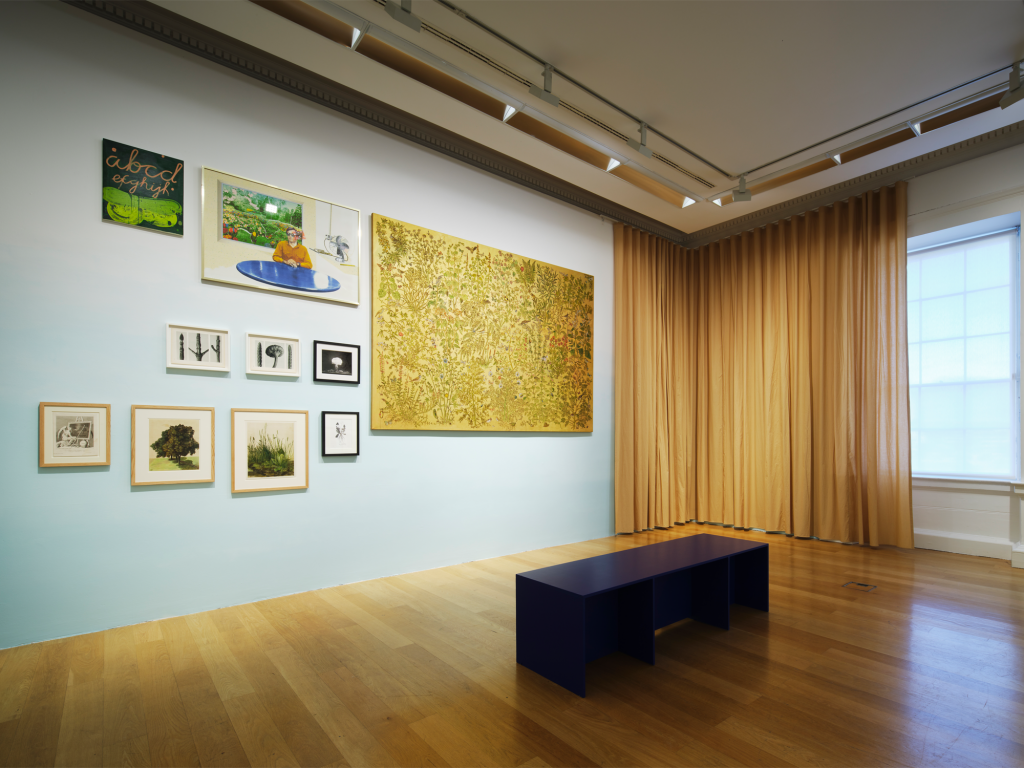
Design plays an intricate and emotive role throughout the galleries of the museum-wide exhibition The Narrow Gate of the Here-and-Now. From raw red tones and icy cold blues to the textured surface of the hanging curtains, each chapter of this exhibition features a bespoke design tailored to it’s theme. In this article, Claire Walsh, Assistant Curator: Collections, talks through the design approach for Chapter Two: The Anthropocene of The Narrow Gate of the Here-and-Now.
…………………………………………………………………………………………………………………………………………….
The exhibition design for The Narrow Gate of the Here-and-Now was developed by the collaborative architecture and design practice led by Jo Anne Butler and Tara Kennedy. From the early stages, we worked closely with them to create a visual language that would be legible across the four chapters of the exhibition. Our initial prompt was that the exhibition would explore the past thirty years through themes that traverse the political, the planetary and the personal.
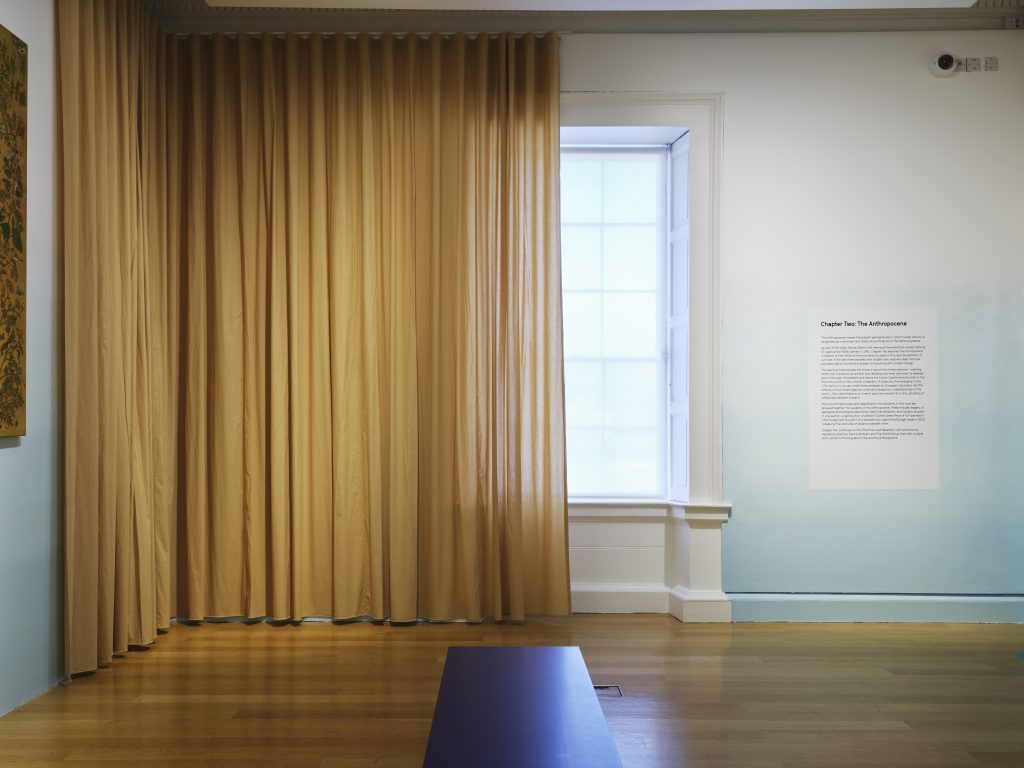
They responded with a colour palette of reds and blues – reflecting political campaigns (blue vs red), planetary warming (blue to red) and the blurring of gender identities (blue and pink merging into purple). Alongside the colour scheme, they proposed installing curtains at intervals throughout the galleries that would break up the familiar identities of the spaces, soften edges and create new vistas and pathways. Where we would traditionally build temporary walls to create additional rooms and block light for moving image works, the curtains offered us a more flexible and sustainable option.
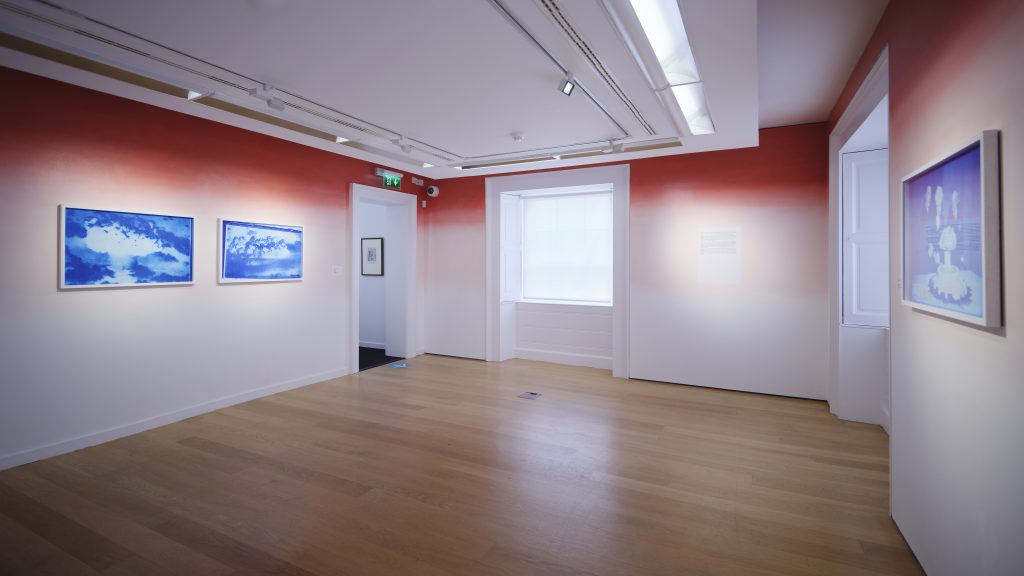
While the four chapters contain these design elements, a bespoke approach was developed for each. Reflecting the theme of The Anthropocene*, the designers based the colour palette of Chapter Two on the coldest and hottest places on earth (‘glacier’ blues on the lower levels and ‘desert’ oranges upstairs). The burnt oranges also reference another key theme of the exhibition which looks at the relationship between the Museum and the Anthropocene.
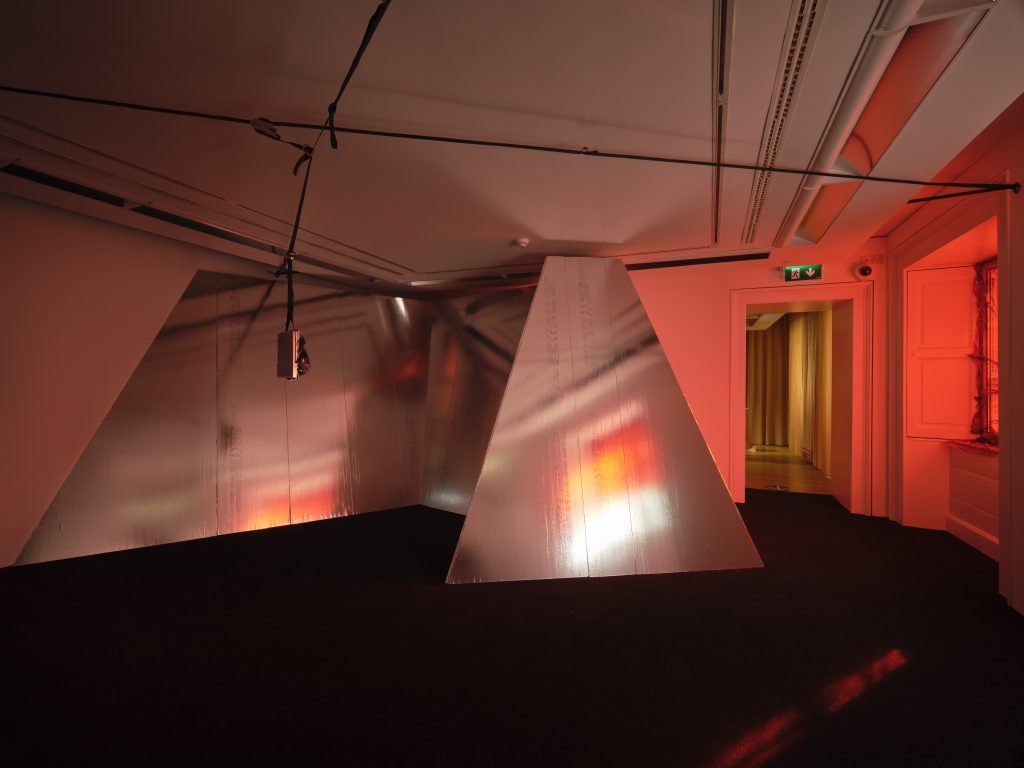
With the terracotta walls imitating the John Soane Museum in London and its classic 19th century museum interiors. Echoing the cooling and warming of the planet, Butler and Kennedy suggested using an ombre effect with the paint to create a feeling of transition within the exhibition. The walls of a room on the ground floor, densely filled with collection works, fade from icy blue up to white as if an invisible tide has gone out. Upstairs, the inverse – deep shades of orange rise like heat to the top of a white wall. To reach the final room of the show in the basement level, visitors descend the stairs into a glacial blue space.
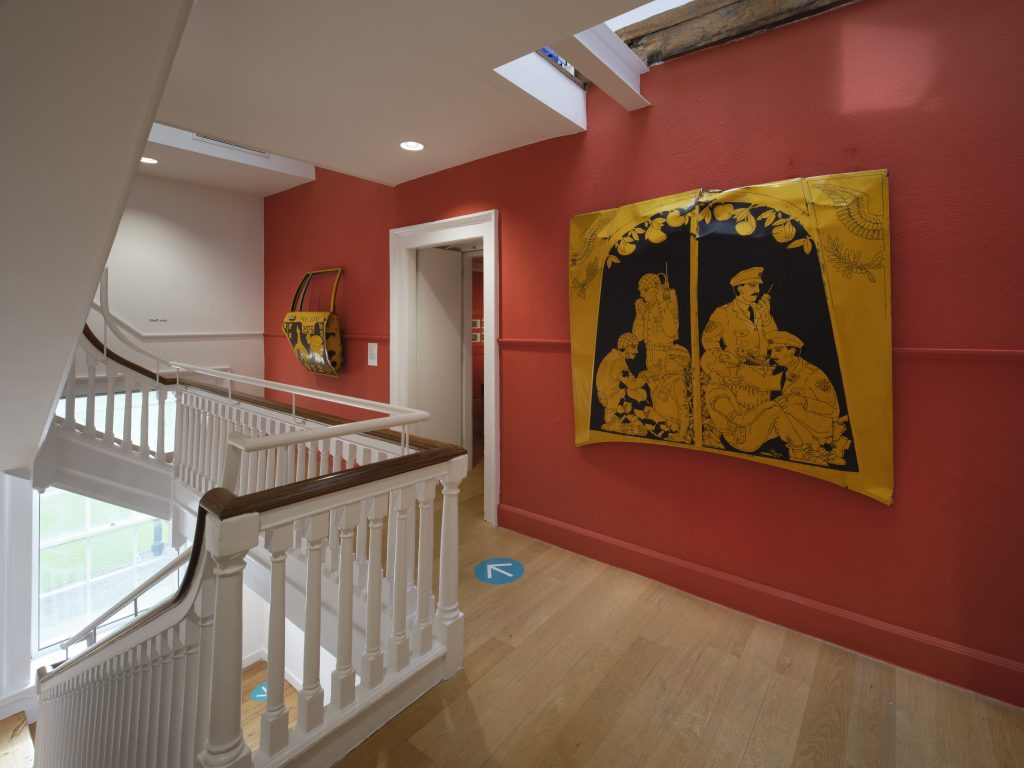
Stopping at a level height that appears as a flood line, the paint creates a ‘subaquatic’ atmosphere for the film installation situated within. Canvas-coloured curtains punctuate the rooms across the three floors of The Anthropocene. Together these design elements form a stage for the artworks, extending the ideas of the exhibition and generating an atmospheric journey through it for visitors.
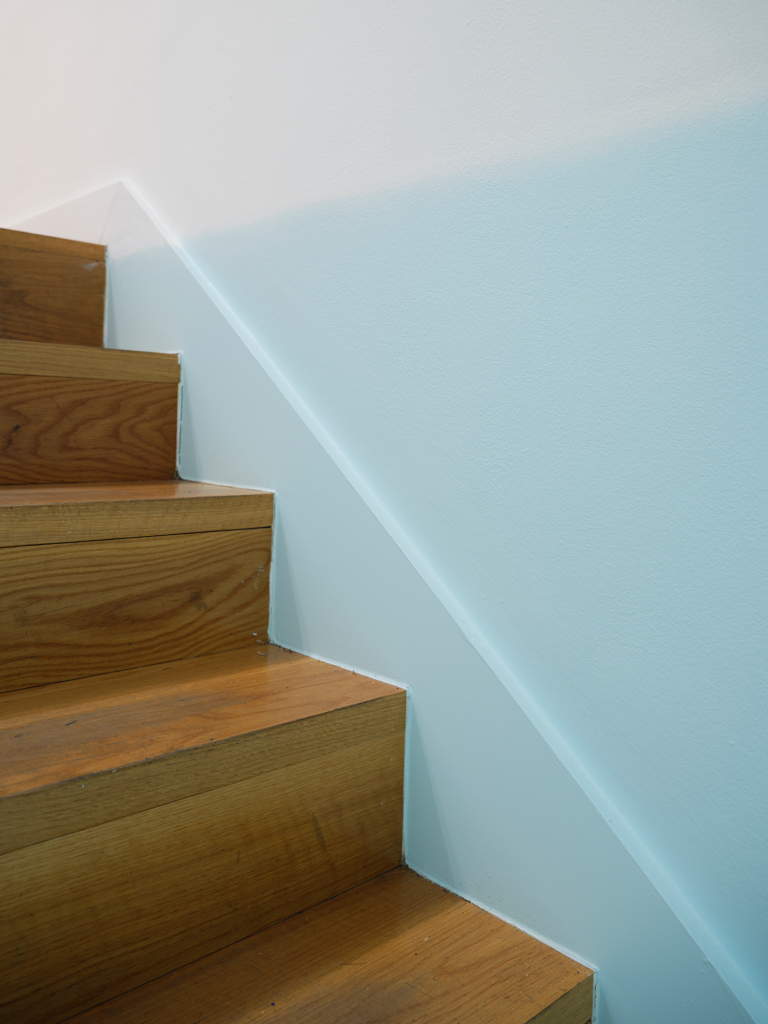
* The Anthropocene considers the present geological era in which human activity is recognised as a dominant and destructive influence on the Earth’s systems.
…………………………………………………………………………………………………………………………………………….
The Narrow Gate of the Here-and-Now: The Anthropocene is on view at IMMA until end of 2022, to visit please click here to book your free ticket.
The other three Chapters are also available to visit Chapter Two: Queer Embodiment until 15 May 2022, and Chapter Three: Social Fabric and Chapter Four: Protest and Conflict until end of 2022.
Categories
Further Reading
A Celebration of History at IMMA
The Irish Museum of Modern Art is extremely fortunate to be housed in the Royal Hospital Kilmainham, one of the finest 17th-century buildings in Ireland.
IMMA | Irish Research Council Enterprise Postdoctoral Fellow Stephen O’Neill
Research is central to the work of IMMA and thanks to funding from the Irish Research Council, IMMA is benefitting from the knowledge of a number of research fellows. Dr Stephen O’Neill has been awarded an I...
Famous Five Go Wild at IMMA
While the IMMA site is closed we will continue to explore the biodiversity of the IMMA site in this series of articles by Sandra Murphy from our Visitor Engagement Team. This time Sandra looks at the butterf...
The Secret Seven Go Fly at IMMA
Over recent weeks IMMA has been preparing for re-opening, as restrictions have been reduced nationwide, we are delighted that the grounds at IMMA are now once again fully open to the public. In this article,...
Up Next
IMMA | Irish Research Council Enterprise Postdoctoral Fellow Stephen O'Neill
Sun Nov 14th, 2021